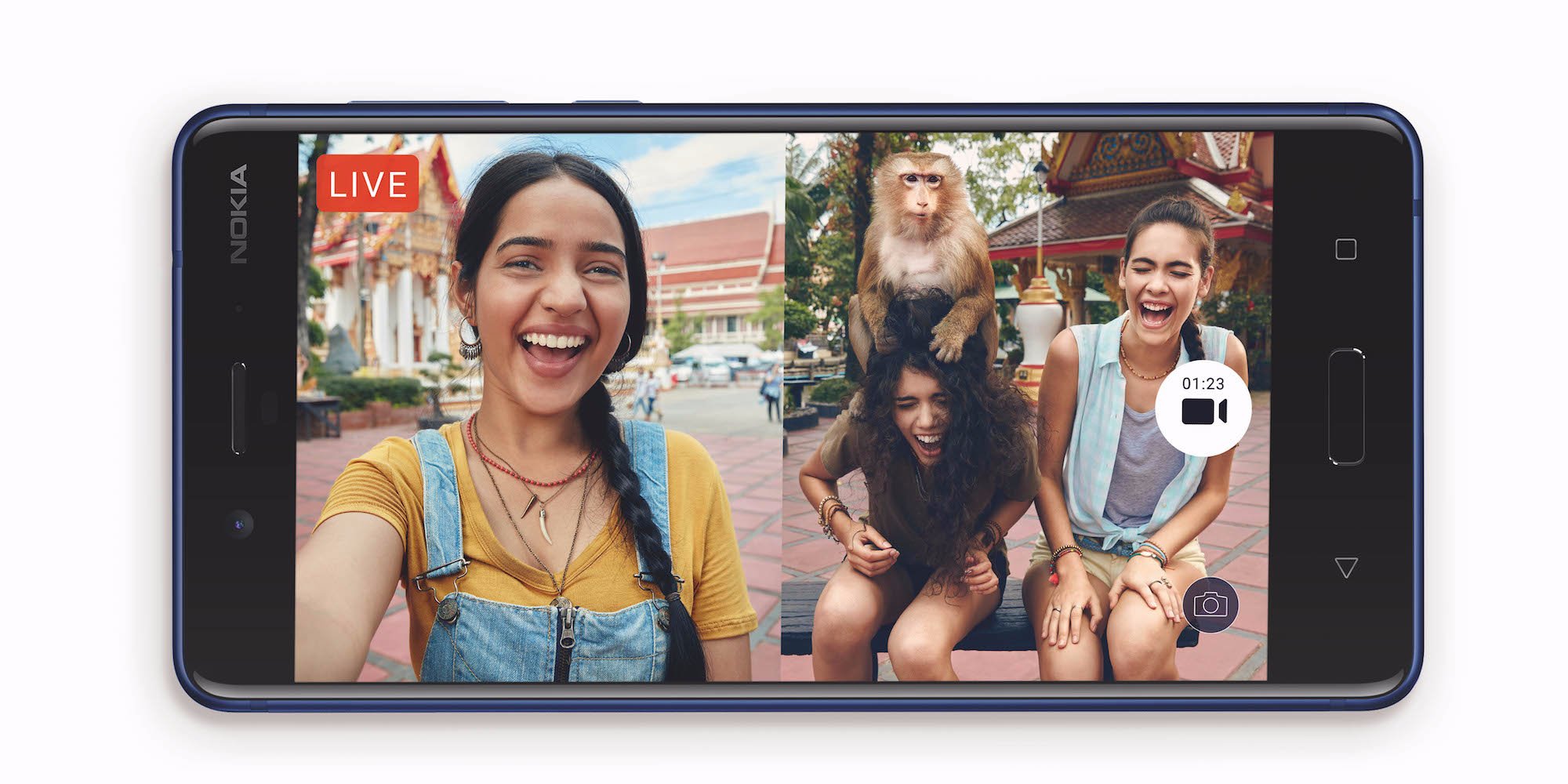With the tagline ‘Be less Selfie, be more Bothie’, Nokia launched its new line of smartphones with Nokia 8 last month. The innovation of ‘Bothie’, using dual cameras simultaneously, facilitates the person shooting a video or taking a snap sharing half the picture along with the subject – be it the person, place or object.
“The response is good, much better than expected. Indeed, overall we got a good response for all of Nokia phones,” Ammar Ahmed, head of marketing HMD Global, which markets Nokia phones in Pakistan, told Profit.
In the same breath, he conceded that “it will be too early to comment on Nokia 8’s success or failure.” As to why, he reasons, “we want to give it time, as we are still in the process of making people aware [about it].” Having been priced at Rs59,900, Nokia 8 was launched on Dec 13, 2017 in Karachi.
Explaining the high-end market in this country, Ahmed said, for smartphones tagged above $500 (Rs55,000), the monthly sale was approximately 25,000. Since in mid-2016, according to Ahmed, the sales of high-end sets was around 6,000 units per month, a year’s time has seen a fourfold increase – reflecting the growth potential in this particular segment.
Smartphones, now ruling the roost:
Going by the Pakistan Bureau of Statistics data, out of 24 million mobile phones imported last year, nearly half were smartphones.
Meanwhile, internet giant Google has put Pakistan under the scanner as it rates the country among the quartet that will give it its ‘Next Billion Users’ – the other three being India, Brazil and Indonesia.
“The first billion users came to the internet through computers, while the next billion would emerge through mobile phones,” said Singapore-based Tania Aidrus, chief of staff of Google’s ‘Next Billion Users’.
At this point, divulged the Google official, Pakistan has around 40 million internet users – up from five million before 3G and 4G spectrum was introduced here in the first half of 2014. And around 32 million, a whopping 80%, employ cellular phones to access the internet.

Nokia, trapped in the past?
On the basis of number of handsets sold, Ahmed claimed, Nokia still is the biggest brand in this country. “Pakistan is not only few large metropolises, there are huge number of people in small towns and rural areas still using feature phones,” said he.
If anything, the statement made it quite apparent that Nokia taking pride in being leaders in the feature phone category remain prisoners of glory days long past while the leading lights in telecom are taking massive strides towards ever-greater innovation.
From the 1990s uptil early 2000s, Nokia overwhelmed others with its 50% global market share. By 2013, it had come down to a puny 3% only because smartphones with a host of new features captured the market – other brands that produced it leaving Nokia in its wake.

Since they were expensive to begin with, the trend was slow to gain momentum in Pakistan. Launched in Pakistan in 2009, Q-mobile filled the vacuum, taking the market by storm, with its cheap range of smartphones to emerge as the biggest selling brand in a matter of a few years.
What the market gurus say:
Though not as successful as Q-mobile, Oppo made its presence felt coming with its ‘Selfie Expert’ tag – offering handsets with better selfies than competition.
Now Nokia in attempt to better it, has offered ‘Bothie’ in Nokia 8, making simultaneous use of its front and rear camera.
Since almost all smartphones have front and rear cameras, either copying the design or creating software similar to Nokia 8 should not be a challenge.
“To install it is not difficult at all, but simultaneous use of rear and front cameras heats up the handset while Nokia 8’s specific design makes it stay cool,” said Ahmed.
According to the UK-based reviewer Chris Martin, Nokia 8 has comparable specifications to that of Sony Xperia XZ1 and HTC U11, costing £599 and £649 respectively. However, in Pakistan Nokia 8’s main rival is Samsung’s Galaxy S8 – quite expensive at Rs81,000 to Rs83,000.

On the other side of the coin, Huawei’s Honor 9 – not yet available in the Pakistani market – also offers similar features and costs less than Nokia 8.
Not competitively priced:
Considering the features on offer and its brand worth in the smartphone category, Nokia 8 has not been competitively priced. “It’s way too expensive”, said the market sources.
“At around Rs30,000, Huawei Mate 10 Lite is priced at half than Nokia 8. Meanwhile, Samsung, a highly acceptable brand in smartphone category, is selling its A8 Rs2000 to Rs4000 above Nokia 8 for almost the same features,” said Mohammad Majid, a salesman at a wholesale shop at Karachi’s biggest cell phone market in Saddar.
Mohammad Asif, another salesman, giving his evaluation, said: “The resale of Nokia 8 sets one back big time, as within one week it would fetch just Rs15,000 or even less. Samsung by far gets one the best resale – declining by around Rs5,000 to Rs10,000 even after three to four weeks.
“People are finicky about their handsets; they would rather incur a loss ditching one they don’t fancy. We come across many everyday who sell at much lower prices sets that are a hit otherwise,” said he.

Yet another salesman Mohammad Bilal Yousuf, works in a shop beautifully branded by Oppo, also advised this reporter to buy Samsung’s A8 or Huawei’s Mate 10 Lite – both having the same features as Nokia 8.
“When it comes to resolution, nothing beats Samsung – the best, even ahead of Apple. Oppo offers a good selfie and nothing more. Incapable of upgrading to the latest android standards; as its processor is very slow, an Oppo set with Android 6.0 cannot be upgraded to 7.0,” he said.
Meanwhile, Bilal said, Nokia’s keypad 3310 was selling well, though it’s priced at Rs6,000 – around the same price touch-screen Androids can be purchased.
Interestingly, G-Five has also named its keypad phone 3310 with addition of a ‘G’ in the beginning. “G3310 doesn’t boast features of Nokia’s 3310, but its price-tag at Rs2000 is also at rock bottom,” said a salesman.
While Nokia has jumped on the bandwagon with the intent to grab as much as they can of the ever-growing smartphone market in this country, beating their counterparts does not seem to be the agenda. With its feature phones market intact, it wants to push its smartphones using the very channels it employs in the former. If media reports are to be believed, five mobile manufacturing companies including Chinese giants Foxcom are moving to Pakistan to start production here.

Only one out of five salesmen this writer talked to mentioned, without much conviction, ‘the Bothie aspect’ of Nokia 8 despite its being projected as its ‘Unique Selling Proposition (USP)’.
“The [cell-phone] market is so huge, nobody kills another. Nokia 8 too will not be killing anyone’s sales either,” said Ahmed.
It sounds like being resigned to remain content with whatever Nokia can get out of its latest offering would be welcome. No dreams of cutting a scythe into opponents!







